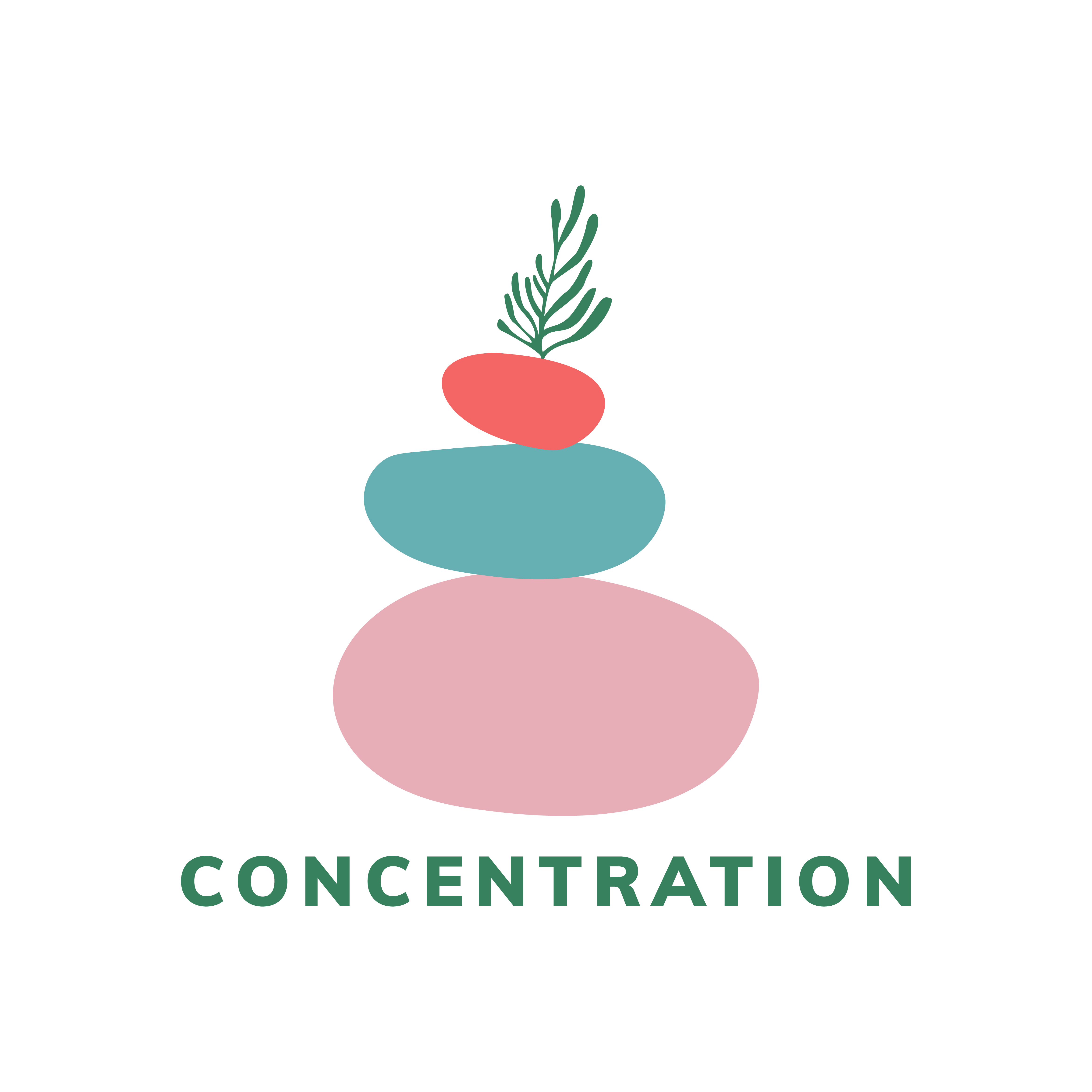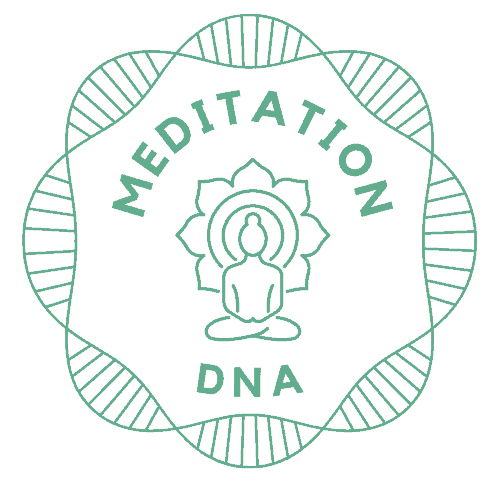
Do you find it hard to stay focused often? Do you want to learn how to improve your concentration and increase your focus? If yes then this article on meditation for concentration is for you.
Meditation provides us with a way to enhance our concentration and create focus within ourselves. This is something that has been used throughout history to reduce stress and anxiety.
In this article, we look at various techniques and tools that can be used to improve your concentration and focus which can lead to more efficient productivity through the benefits of meditation.
How Meditation Can Help You Focus
If you’re like most people, your mind is a constant source of distraction. We are constantly bombarded by information from every direction: TV, radio, social media, email, text messages, and more. This constant stream of stimuli makes it difficult for us to focus on anything for any length of time.
Researchers at Harvard University say our minds are lost in thought more than half the time. While we dwell too much on the past, we worry about the future. These thoughts can lead to feelings of stress, anxiety, depression, overwhelm, and sadness.
Meditating can help pull you away from the never-ending “what could’ve been” and “what ifs“. Researchers at the Columbia University medical center claim meditation can change the structure and functions of the brain through relaxation. This can improve your overall health by:
- improving mood,
- reducing stress hormones,
- helping blood pressure control,
- helping lower cholesterol levels, and more.
Each form of meditation may offer slightly different advantages for specific individuals. Different approaches work well for different people, this is personal preference because fundamentally every type of meditation allows us to access a calmer state.
The practice of meditation can:
- help reduce stress level, anxiety, and depressive symptoms by calming down brain activity
- as well as improve memory and cognitive function for longer periods of time.
- It can also increase immunity and psychological resilience.
- It provides us with better sleep helps improve memory and other functions.
Meditation can be practiced by any age group or gender. In addition to being beneficial for your mental wellbeing, regular meditation can help you gain control over your life and improve mental performance.
Meditation is a powerful tool for improving your mental health. While many people have heard about mindfulness or meditation, few understand what exactly it entails. In fact, it’s hard to explain because there is no “one size fits all” form of meditation. It varies from person to person and depends on individual preferences such as how comfortable you feel doing it. However, some types of meditation provide benefits that are common among most people.
All forms of meditation share one common goal—to calm the mind and focus attention. However, some methods may be better suited than others for specific purposes.
So with all that being said let us explore meditative practices and techniques that could help our concentration and increase in focus…
4 meditation methods that increase concentration – meditation for focus
1. Mindfulness training
The effects of mindfulness meditation span a cast spectrum. Mindfulness meditation focuses on keeping your thoughts and emotions calm throughout the day. Since it relies on self-awareness, it helps improve your ability to control negative emotions and stay focused on the present.
For example, Transcendental meditation focuses on clearing out distractions by using the mantra “Om” repeated over and over again until a meditative state is achieved.
A mindfulness exercise is designed to focus on your breathing and observe thoughts drift through your mind without coming attached to these thoughts through overthinking. You do not try to change anything by dwelling on the thought you simply notice the thought and then let it go. You note what you are experiencing without judgment or criticism.
Many activities, including driving, playing sports or music, reading, and paying attention at work or at school, require high levels of concentration. In addition, you’re more likely to derive satisfaction from honing in on and accomplishing one chosen task than from trying to juggle several at one go. As you train the mind to remain present and fully focused on one object – physical sensations or the process of breathing, for example – you learn to let go of all other thoughts and distractions as well. (mindworks.org)
You’ll find lots of freedom if you discover that there’s no need for you to be aware of everything that comes up in your head. Being able to focus when needed means your concentration skills improve automatically.
In his research, an Italian neuroscientist named Giosepe Pagnoni compared the brains of 12 meditators from Italy’s Buddhist community against a group of non-meditating individuals. He found that their brains functioned differently when they performed tasks related to attention, memory, language processing, visual perception, motor skills, and empathy.
As reported by an article in Psychology Today, Dr. Antonio Pagnoni found that meditation improves brain function, which leads to better concentration. It’s not surprising because these methods are central to the practice—and teaching—of Zen meditation.
2. Concentrative focused attention
A concentrative focus means focusing on one thing at a time. Your goal is to keep your focus directed toward one thing at a time so that your brain doesn’t wander off into different directions.
The concept of concentration focus is very beneficial to increase our concentration on a task at hand.
This can also be achieved by setting a focused intention and meditating on this intention so that your subconscious can drive you towards this goal long after you have finished meditating.
Meditating with a specific goal/intention in mind or repeating an affirmation can be a way of concentration focus.
“I invite success and happiness into my day.”
3. Moving Meditation technique
Research shows that slow, repetitive movements help relax your mind and body while focusing on your breathing. Any movement done with mindfulness can be a form of movement meditation for eg. yoga, mindful walking, dancing, or tai chi.
Moving meditation is effective as it adds an element of physicality and body awareness too. By releasing tension from our physical bodies through movement and therefore shifting energy our minds reach a calmer state as it becomes absorbed by the movement/task at hand. This works in a similar way to the body scan meditation technique.
4. Counting the breath cycles
According to a recent study, deep breaths help us cope better with stress because they allow us to breathe into our diaphragms. Shallow breathing has become the default way to breathe amongst most people and this can create added feelings of angst and stress in our lives as it overstimulates our nervous system.
Some cutting-edge companies offer meditation rooms for their employees who want to meditate during breaks from working.
A good way to help people focus when they’re having trouble concentrating is by using an easily countable object such as their breath. Mindfulness meditation takes ‘focus’ a step further by requiring the meditator to pay attention to his breath.
Count the inhale, and then exhale, one. Inhale, exhale, two. Inhale, exhale, three, and so on. It’s important to be completely aware throughout the entire meditation process. Many people find that their mind has drifted off before they get to three.
As time goes by, you become better at focusing and counting longer than ever before. You’re able to reach new heights because of your improved attention span.
You don’t need much time dedicated to meditation. Just start by setting aside a few minutes each day.
So what is the difference between mindfulness and concentration?
The practice of concentration is a fundamental building block to a mindfulness or meditation practice. So then is there a difference between the two? If I concentrate on writing this article really hard does that mean I am meditating? Not entirely…
Mindfulness versus Concentration
Mindfulness and concentration go hand in hand while serving distinct purposes. Each has its own role to play in meditation; however, they cannot be separated from one another.
‘One-Pointedness Of Mind’ Is Often Called concentration. It consists of forcing the mind to focus on something for an extended period of time. Note that the word “force” has been used since concentration is an activity that does not always happen automatically. It can be developed by a conscious effort of training the mind as this is not a state of mind we are constantly in and this is not necessarily a state of mind we constantly want to be in either.
On the contrary, mindfulness involves developing refined senses and sensitivity towards something specific. Mindfulness is an increased state of awareness in a more general sense rather than honing in on a singular goal.
They both however form part of the team when it comes to meditation.
Mindfulness is slightly more sensitive in nature and therefore notices things with less judgment. Concentration holds a more forceful nature. With concentration, we keep our attention focused on just one thing at a time.
In an ideal world, mindfulness would be present in every aspect of our lives When we notice our mind wandering, mindfulness brings us back into focus by noticing where our attention has wandered. Concentration does the actual work of holding the attention steady on that chosen object.
If either of these partners is weak, your meditation goes astray.
Concentration could be described as the ability to focus single-mindedly on something for an extended period of time. Concentration is not something that happens automatically; rather, it requires effort. However, this needs to occur in a state that is empty of greed, hatred, and delusions – often concentration does not bring us to a calm state.
One-pointedness (samadhi) without wholesomeness leads nowhere; it’s like trying to fly by flapping your arms For eg, you can be very single-minded while working towards a deadline which is not a stress-free situation.
Having an uninterrupted focus on doing things that you don’t like isn’t going to be helpful. In fact, such thoughts are quite fleeting even if they last for an extended period of time and are focused upon harming others.
In short, concentration means gathering one’s thoughts in an organized manner so they become powerful and intense in order to achieve something.
Let us use an analogy of a lens…A lens is just one example of an optical device for focusing light onto something else. Parallel waves of sunlight falling on a piece of paper will do no more than warm the surface. If that same amount of light falling onto one spot was concentrated by a lens, then the paper would burst into flame. The lens represents concentration.
The concentration provides the intense focus needed for deep meditation. When we look at something using mindfulness, our mind focuses on the thing we want to observe, such as an image or sound. We then use the lens (or concentration in this case) to view whatever is present.
Concentration should be viewed as a tool rather than an end result. It can be used both positively and negatively. For example, a tool such as a sharp knife can either be used for creating something beautiful or harming someone. It depends entirely upon the person using the knife and what their intentions are. Concentration is similar. It can help liberate you from your thoughts, feelings, and even actions by driving you towards a positive goal. But it can also be used in an egotistical way.
In some ways, it can be used for both personal development and competitive purposes. It can be used with a selfish goal in mind too. The main problem is that concentrating on one thing at a time won’t help you gain any insight into who you really are which is what mindfulness achieves to do. In fact, it won’t help us understand our thoughts, feeling, or mental obstacles as it does not provide us with introspection when used alone.
Concentration alone does not unravel the ego and therefore concentrating on something does not necessarily mean you are being mindful. Only mindfulness can do that as it turns and focuses the lens to the inner workings of our mind. If mindfulness isn’t present to examine what’s revealed by looking through the lens, then it was all pointless.
Mindfulness can bring us this inner wisdom of reflection and it uses concentration as a helpful tool to dig deeper into our psyche.
So in other words we can concentrate without being mindful or meditating but we cannot be mindful or meditate without concentration.
To summarise, mindfulness is the practice of being aware of what you’re doing at any given moment in time. It involves paying attention to everything around us, including our thoughts, feelings, actions, and surroundings. If we’re too busy or distracted, we might miss something if we aren’t mindful. Meditation is a technique used to enhance one’s awareness. It requires focusing on a single thing in order to help increase mental clarity. When practiced regularly, both techniques reduce stress and improve mood.
In order to make sure we’re fully present and focused during these times, we should pay attention to every aspect of life. Whether it’s work, home improvement projects, or family obligations, there will always be things competing for our attention. The trick is finding a way to manage them so that we don’t become overwhelmed and get caught up in the day-to-day tasks without giving importance to other aspects of our lives. Since mindfulness requires a higher level of focus and concentration we can use it to expand, build and improve our attention span, concentration and focus.



